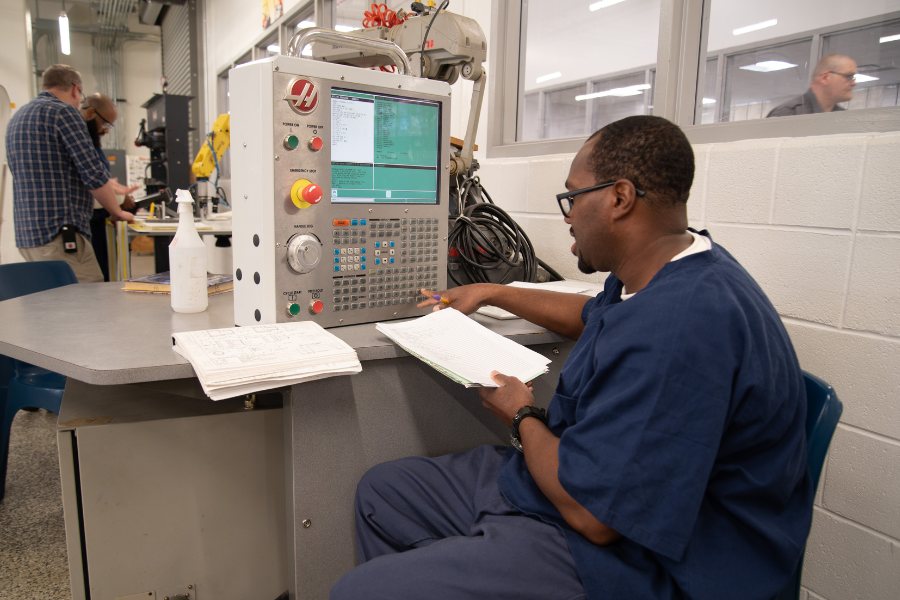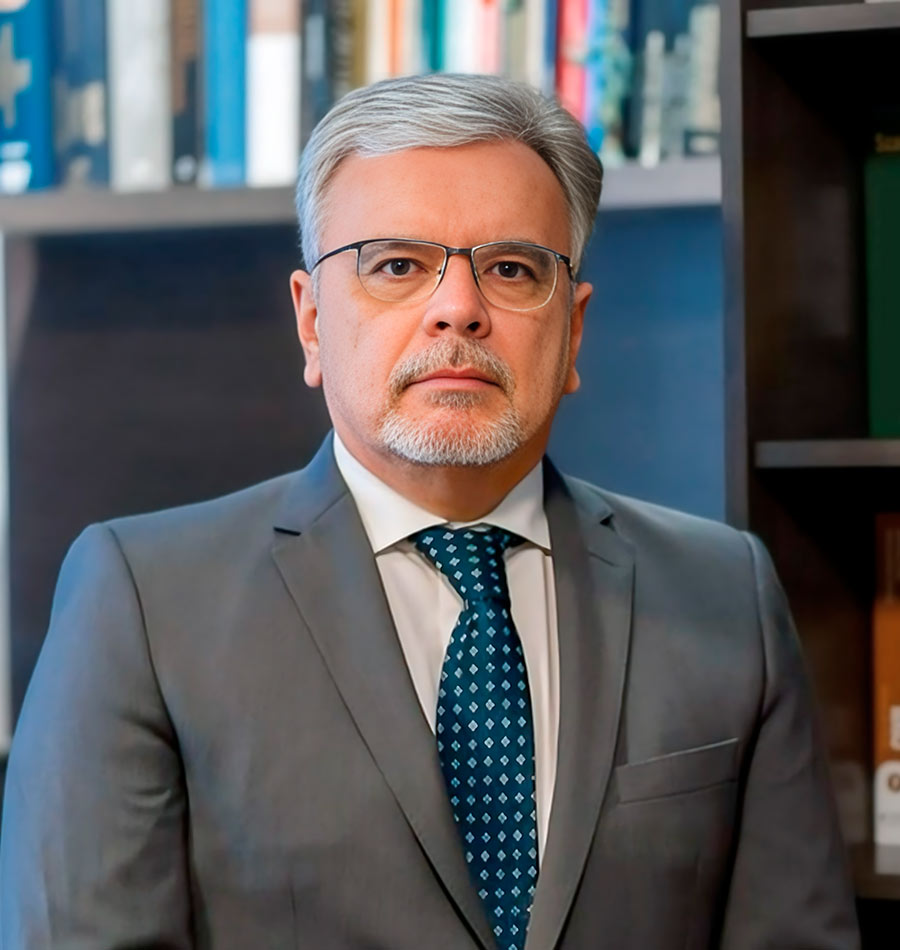Innovation in Practice
Michigan, USA
In 2015, the Michigan Department of Corrections (MDOC) set out to highlight the positive impact of its work and build on the strengths of the agency. While this work ultimately took many forms, in programming, education, and reentry, at its core it looked beyond simply reducing recidivism. The aim was to create real opportunities for success for people in the criminal justice system.
Long-term public safety is dependent on the outcomes of individuals after they leave supervision. Developing skills, knowledge, and abilities while focusing on stability through employment, housing, and connections to family and community are all key to creating these outcomes.
The result was the ‘Offender Success’ (OS) model which focuses on education, training, and personal transformation in addition to evidence-based core cognitive and substance use programming during incarceration. The goal is to provide students with opportunities for employment, educational development, and self-sufficiency after release. Unlike previous models that had focused primarily on providing individuals with limited material supports upon release, OS focuses on turning time in prison into the foundation for a successful return to society as a self-sufficient, employed member of the community.
This focus on economic stability doesn’t come at the cost of addressing the major criminogenic needs. Instead, it expands the definition of success beyond the avoidance of future criminal conduct. MDOC now measures success in terms of self-sufficiency, employment, and positive engagement with the community.
One of the most important examples of this focus on success is the MDOC’s Vocational Villages. While offering vocational programming was a common practice at the MDOC and most other state correctional agencies, the Villages were designed to reimagine how career and technical education could work inside the prison setting.
When the first Village was opened in 2016, it represented the department’s most ambitious commitment to student training and employment ever. Recognizing the need for not just post-release employment, but actual careers, the MDOC worked with a variety of employers, unions, and other stakeholders to develop an educational community setting with state-of-the-art technology and equipment within the prison.
Unlike other prison vocational programs, the Villages go far beyond just what is taught in the classroom, resulting in an immersive educational community. Students must apply to participate in one of the programs after completing a vocational counseling process. They are screened for aptitude, motivation, and their plans for using their education to better their lives. Students are recruited from all 26 of the MDOC’s prisons and placed in one of the three Villages.
Upon arrival at their Village, students are oriented to the milieu of these sites, specifically that they will not simply be participating in a vocational program for a few hours a day, but will instead be ‘Villagers’. Housed in a dedicated housing unit at each prison, Villagers are held to a higher standard not only by staff, but also by their fellow participants, as they are a community with a shared goal of personal transformation through training and employment.
While the Village contains some privileges, Villagers are also expected to put their studies first, forgoing activities such as visits during class time and trading recreation for time in the classroom and learning labs.
The MDOC gathered feedback from employers and prisoners about previous prison vocational programs when designing the Villages. Employer feedback noted that students had some skills, but were not successful employees post-release, as the transition from prison to employment was simply too great.
Student feedback was that they were often trained in programs in which they had little actual interest or held limited promise of having a fulfilling career. As a result, they rarely secured employment in these trades post-release.
The Villages sought to address this feedback by focusing on skills development within a trade in which they have a real interest and can achieve a sense of success through actual employment post-release.
Villagers are also in the classroom or on the shop floor at least 6 hours per day to prepare for actual work. This was a significant shift in thinking and operations for the MDOC, but employers were clear that they wanted employees who were ready to work a full day and students were clear that they wanted to be engaged at a level where they spent most of their time focused on their studies. The result is not only a work-ready student, but a marked decline in less constructive activities within the prison, including grievances and misconducts, as idleness was reduced in favor of a more structured schedule and Villagers sought additional opportunities for personal enrichment.
To ensure that time spent in the classroom and shop floor was truly productive, the MDOC also worked with employers, unions, and trade associations to ensure that the curricula and equipment used within the program represented the cutting-edge industry standards. Department credentials were eliminated in favor of state or nationally recognized credentials or licensure. This created parity with programs taught at community colleges so that these credentials are truly portable for graduates.
One example of this approach is an agreement between the MDOC and the Michigan Secretary of State, which is responsible for licensing all auto mechanics in Michigan. This agreement allows the MDOC to proctor state-approved tests for licensure within the Villages for students so they can leave prison with valid credentials in hand.
The goal of the Villages is to produce employment with a sustainable wage post-release while reducing the recidivism rate. To accomplish this, the MDOC embarked on an ambitious effort to promote the Villages and educate employers, using open houses, job fairs and tours, including tours by multiple governors, legislators, and other key policymakers.
The result has been steadily increasing support from employers who hire Villagers to begin work after release. To foster this support, the MDOC created a Job Developer position at each Village, with staff who work directly with employers and prospective candidates. Organizing tours, setting up interviews, following up on job leads, and keeping students engaged in the task of finding employment are all critical and can only be accomplished because of the efforts of the job developers.
Engaging businesses at the front end also allows for the MDOC to make a commitment to students that if they successfully complete the programming, their employment prospects will be based on factors such as their talent and work ethic, rather than their criminal record.
As a result, many students leave their Village with a job offer in hand. For those who don’t, the MDOC’s Employment and Opportunities Unit will take over to continue to work with the graduate to find a job or move up as they develop their career plans. This type of direct support for graduates at every step of the employment process is key and continues even after a job is secured, as specialized field agents manage the Villager caseload to allow for a relationship to be developed with key employers so that supervision activities can occur without jeopardizing employment. This is a reminder that while the structure of a program like the Village is important, it is the people who give that structure life, including instructors, educational support staff, and corrections officers in the Villages, as well as field agents and employment specialists after release, that help change people’s lives for the better.
The first Village in 2016 was followed by two additional Villages. With support from the Legislature and other partners, the range of programs has grown steadily and now includes Building Trades, Commercial Truck Driving, Additive Manufacturing, CNC Machining/Robotics, Cosmetology, Welding, Auto Mechanics, Food Technology/Hospitality, Horticulture, Diesel Mechanics, and Line Clearance/Tree Trimming. The Villages continue to evolve and improve to keep up with Michigan’s labor market needs.
In 2024, the MDOC celebrated the 2,000th graduate of a Village completing a program and returning to their community on parole. Nearly a decade in, the results show clear impact: reduced recidivism and increased employment compared to those who do not participate in the programs. The Villages themselves have helped build an environment focused on education and personal enrichment which is better for those that are incarcerated, as well as staff.
The model continues to develop. One recent milestone is the new Thumb Educational Center. This building, which is over 30,000 square feet, is being converted to a new focused school community that will house both career and technical education programs and college programs. Michigan currently has 13 post-secondary programs allowing students to achieve an associate or bachelor’s degree through face-to-face instruction at our facilities from a Michigan higher education institution. The new educational center will expand this with the goal of having nearly everyone at this facility, which houses roughly 1,000 individuals, simultaneously enrolled in high quality educational programming. The impact on both students and the wider facility should help MDOC continue to redefine what success means in practice.

Heidi E. Washington is the Director of the Michigan Department of Corrections, where she oversees the state’s prisons, probation and parole supervision, the Parole Board, and other administrative functions. Her previous roles include warden at several facilities and leadership positions in administration and legislative affairs. She holds a BA in political science from Michigan State University and a law degree from Thomas M. Cooley Law School. Director Washington also participates in national correctional and justice committees, including the Correctional Leaders Association and the Integrated Justice Information Systems Institute.



